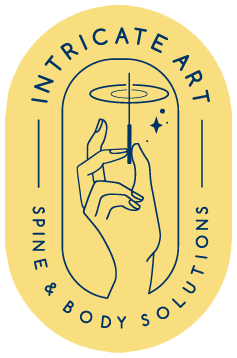
Popliteus Dry Needling for Low Back Pain, Knee Pain & Plantar Fasciitis
The popliteus is the deepest muscle in the back of the knee. Its primary action is to unlock the screw-home-mechanism. It internally rotates the tibia on the femur, in open-chain. Similar to the multifidus, properly treating the popliteus is basically impossible without using needles. It is so deep in the back of the knee that the only type of treatment you can provide is extremely indirect. without needles. With needles, it is super easy to treat, and treating it oftentimes stimulates massive improvements in knee pain, low back pain, and foot pain, along with a ton of other stuff.
Related: Click here to read another blog on Plantar Fasciitis
If the popliteus it tight, full terminal knee extension is not possible. So, when you are walking or running, and you go to put your foot down, your knee joint is not going to be properly stabilized. A tight popliteus also makes your leg “shorter.” To compensate for this deficiency, consciously or subconsciously, you change something, or a bunch of things, along the kinetic chain. This messes up joints and muscles all over the body. Knee pain, low back pain and plantar fasciitis can all be immediately improved by needling the popliteus. A lot of the time I find the popliteus to be the most likely underlying cause for these 3 conditions, and following needling, complete resolution or significant improvement is oft noted.
The Popliteus & Acupuncture Points
In acupuncture-Land, by needling the popliteus and its tendon, you will needle the gall bladder and bladder channel. There is quality acupuncture research illustrating the effectiveness of needling the popliteus, or the corresponding acupuncture points (around BL 55 & GB 34), for hip pain, knee pain, LBP, diabetic neuropathy, fibromyalgia, restless leg syndrome, insomnia, migraines, endogenous opioid release from the HPA axis, and more. Medical Acupuncture research often references needling along nerve paths and at junctional zones of stuff. Like spinal junctional zones and junctional zones of neurovasculature. The popliteus is right around one of these junctional zones. Who knows exactly why this works, but I utilize this concept frequently when treating my patients. It works awesome.
The Popliteus & Low Back Pain
As noted above, popliteus tightness limits terminal knee extension, essentially making the leg “shorter.” When this happens, the sacroiliac joints (SIJ) become deviated, secondary to an altered gait pattern. SIJ deviation is involved in a huge percentage of LBP cases. It can directly cause LBP, or be a direct result of LBP. Or, in this instance, a naughty popliteus is leading to an impaired gait pattern, leading to SIJ deviation, leading to LBP.
Remember where the popliteus is – it sits just underneath the transitional zone from the sciatic nerve and femoral vasculature to the tibial neurovasculature. If the popliteus gets mad, it gets tight and thicker. This can place stress on the neurovasculature in the back of the knee. This sends negative afferents to the brain and causes nervous systems dysfunction, typically elevating the sympathetics, leading to hypersensitivity, hyperalgesia, allodynia, autonomic dysfunction, etc. These are just a couple examples of how a cranky popliteus can cause LBP.
The Popliteus & Knee Pain
Being a knee muscle, it is not hard to see numerous ways a pathologic popliteus could cause knee pain. For me, when I get a tight popliteus, I rub spinach on the back of my knee… Haha...? Anyone?...Is this when my wife says they are laughing at you, not your stupid joke you find so insufferably hilarious?
If anyone wants some more knee-slappin popliteus jokes, just let me know... I got you...
On a side note: spinach contains cannabinoids. If the human endocannabinoid system not does have enough activated cannabinoid receptors, ANS homeostasis is disrupted. A healthy endocannabinoid system, therefore, is key to overall health.
Anyway, a tight popliteus gives me sharp, stabbing pain directly in the back of my knee. This can mimic something like a baker’s cyst type symptoms. On that note, popliteus needling works wonders for Baker’s cysts and the issues they cause.
This is a seriously problematic muscle following TKA’s. Again, it is basically impossible to treat without needles. Treating this muscle following a TKA provides immense pain relief and improved joint ROM. Remember, there is solid acupuncture research indicating popliteus needling stimulates beta-endorphin release from the hypothalamic-pituitary-adrenal (HPA) axis. This depresses sympathetic hyperactivity and increases autonomic nervous system (ANS) homeostasis. And ANS homeostasis helps with everything.
The Popliteus & Plantar Fasciitis
The popliteus, when pathologic and tight, oftentimes results in plantar fasciitis. Since the popliteus is an internal rotator of the tibia (open chain), when it is tight, it keeps the tibia in slight internal rotation, as compared to normal. This, in turn, everts the foot while walking or running, leading to excessive stress and impact placed through the arch of the foot. Ankle eversion also places stress on the posterior tibialis tendon. The posterior tibialis is the primary problem causer when it comes to plantar fasciitis. When it gets grumpy, secondary to existing grumpiness of the popliteus, inflammation and pain in the foot exponentially amplifies. (If I were the tib posterior, I would be pissed all the time. The Popliteus has such a sweet name, and it’s so fun to say! tib posterior is so pedestrian, don’t you think?).
This is just one example how popliteus tightness can start a chain reaction, leading to plantar fasciitis.
So, to sum up why it is important to needle a pathologic Popliteus:
- It causes low back pain.
- It causes knee pain.
- It causes plantar fasciitis.
- It has an awesome name, it is fun to say, and it makes the Tibialis Posterior feel good, cause its name sucks compared to the wonderous Popliteus.
Let me know if anyone has any questions about anything.
Thanks.
Jason



